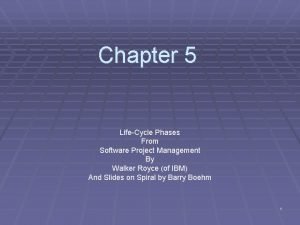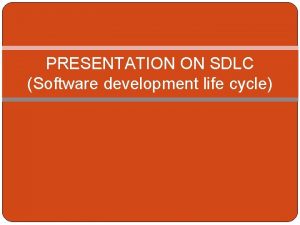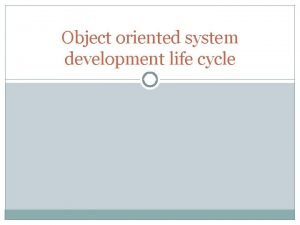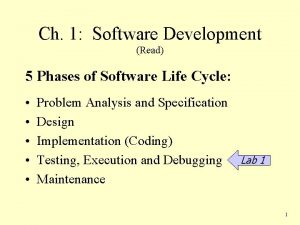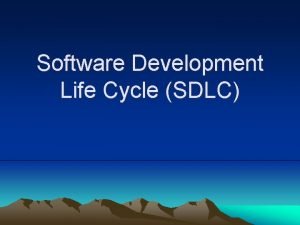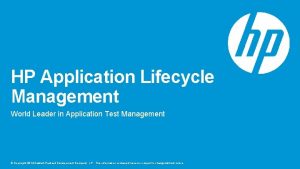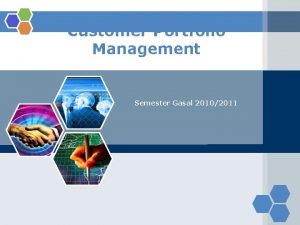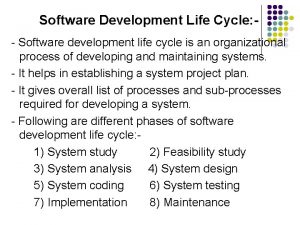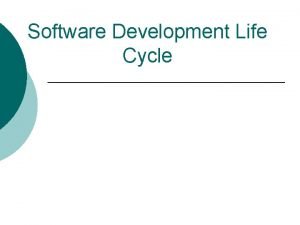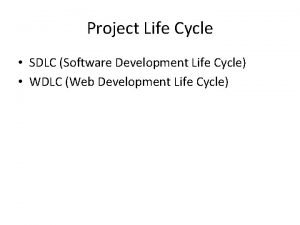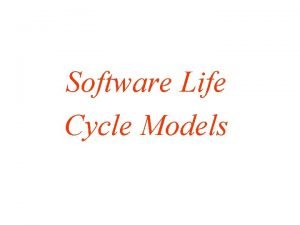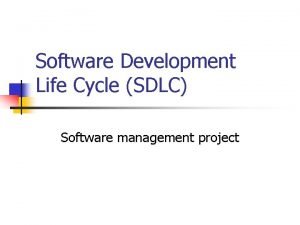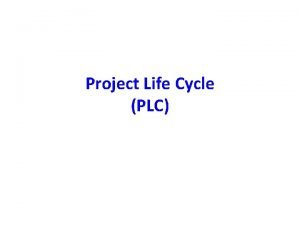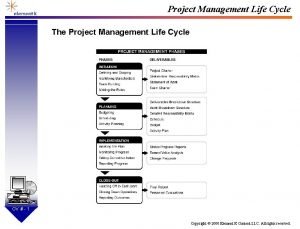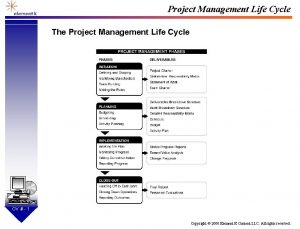Software Development Life Cycle Decisions Project Management Disciplines














- Slides: 14

Software Development Life Cycle Decisions Project Management Disciplines Stacey Shearn September 8, 2005

Introduction Incorporating Project Management Disciplines Introduction • • A Repeatable IS Process Having and Communicating a Project Plan Risk Analysis & Mitigation Change Control

TREND Process • Goals/Scope • • • Requirements Technical Level of Effort (LOE) Requirements Approval Screen Mockups Development and QA Testing Change Request

TREND Process Goals /Scope • What problem are we trying to solve? • What is OUT of scope? • Keep it General Requirements • Need Requirements before you can have a good schedule • Consistency – Need General Documents for Errors, etc. • Requirements tell us when we have achieved success • Wording

TREND Process Level of Effort • Developers Evaluate Requirements on a technical level. • Avoiding technical mistakes by asking the right questions. – “Why is the requirement stated this way? ” • Communicate a meaningful Technical Level of Effort (LOE) – Give enough information for the business to make informed decisions about the final requirements. – Revise Requirements based on LOE (Listing database efforts)

TREND Process Screen Mockups • What should the screens look like? • What design accomplishes the goals of usability? • Shorten the Development cycle with an approved interface design prior to the start of development. • Moved Screen Design to later in process so there wasn’t as much rework.

TREND Process Development • Open line of communication between the business and the development staff. Someone that can answer questions. • Small detailed achievable goals • Small adjustments throughout – stay on course • Approaching higher risk components first • Small, collaborative subteams working to provide maximum results

TREND Process Quality Assurance • Scheduling QA into our development plan • QA and Developers work together to define testable sections • QA kept up to date on Developer progress • Bug Tracking Process – Prioritizing Bugs • Automated tools - Certify

Change Control Managing Change • The answer isn’t “No” • Get Level of Effort • Understanding Impact: Time; Cost; Scope; Quality • Negotiation – what phase does a change go in? What’s the priority?

Progress Tracking Status • Daily time reporting (minimal effort) • Weekly developer progress/planning meeting • Monthly Stakeholder meeting Communication • Delivered via a website or other just-intime method • Something that everyone understands • COMMUNICATE!

Risk • Risk must be addressed whether real or perceived • Continually manage Risk. Thinking about conversion now and identifying Risk will allow us to better plan our strategy. • Staffing – Long time to hire someone and get them trained • Working to lower risk increases your chances of accurate and on-time execution – understandable project plan

Conclusion Embracing Project Management Techniques • Need a published visible plan that everyone works against • Need a repeatable process for each section • Evaluate and Reevaluate Risk throughout the project • Levels of Effort evaluated throughout • Constantly manage Change Control • Factor in Non Development Time (Levels of Effort, Interviewing, Training, Vacation, Time spent on other projects, etc. )

Demo

Questions?
 Poster making meaning
Poster making meaning Odw 5e ch05 arrange the software development life cycle
Odw 5e ch05 arrange the software development life cycle Patterns of development in writing across disciplines
Patterns of development in writing across disciplines Sdlc presentation
Sdlc presentation Lec hardver
Lec hardver Object oriented system development life cycle in ooad
Object oriented system development life cycle in ooad Odw 5e ch05 arrange the software development life cycle
Odw 5e ch05 arrange the software development life cycle Sdlc maturity model
Sdlc maturity model Explain embedded product development life cycle
Explain embedded product development life cycle Software development life cycle hp
Software development life cycle hp Screening decisions and preference decisions
Screening decisions and preference decisions Data management disciplines
Data management disciplines Customer portfolio management models
Customer portfolio management models Lecture notes on project management
Lecture notes on project management Process discriminants in software project management
Process discriminants in software project management

